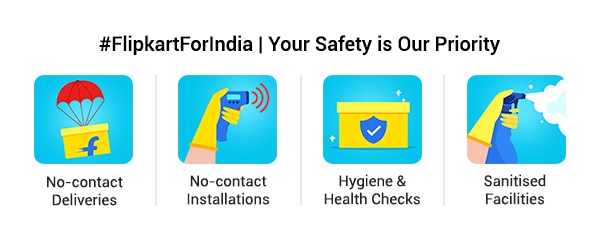Some have
embraced it , some have
discarded it as too far in the future, and some have
abandoned a misused friend in favor of an old flame in preparation. Whatever side of the debate you’re on, you’ve most likely heard all the blogging chatter surrounding the “new hotness” that is
HTML5 . It’s everywhere, it’s coming, and you want to know everything you can before it’s old news.
Things like jQuery plugins, formatting techniques, and design trends change very quickly throughout the Web community. And for the most part we’ve all accepted that some of the things we learn today can be obsolete tomorrow, but that’s the nature of our industry.
When looking for some stability, we can usually turn to the code itself as it tends to stay unchanged for a long time (relatively speaking). So when something comes along and changes our code, it’s a big deal; and there are going to be some growing pains we’ll have to work through. Luckily, rumor has it, that we have
one less change to worry about .
In this article, I’m hoping to give you some tips and insight into HTML5 to help ease the inevitable pain that comes with transitioning to a slightly different syntax.
Welcome to HTML5 .
[
Editor's note : A must-have for professional Web designers and developers:
The Printed Smashing Books Bundle is full of practical insight for your daily work.
Get the bundle right away !]
What are the basics? The DOCTYPE When I first started researching HTML5 a few months ago, one of the main things I struggled to find was the doctype. A simple thing, you’d think it would be everywhere, but after much frustration, I finally found it buried within
w3.org and here it is:
I was also curious why they chose to “html” rather than “html5″, it seemed like the logical way to tell a browser that the current document was written in HTML5, and offered a good template for the future. But I found that
triggers
Quirks Mode in IE6, and when taking backwards compatibility into consideration
is a pretty good choice (in my opinion).
Overall, I really like the new DOCTYPE; it’s small, meaningful, and maybe we’ll actually be able to remember this one by heart and not have to paste it from site to site.
New Elements you should know At first glance, with HTML5, the new elements immediately jump out and command attention. The W3C really listened to the community and planned for the future when architecting the abundance of new elements available. We have everything from basic structural elements like
and The new structural elements table of contents . element, just primary navigation . generic document or application section . It acts much the same way a
independent item of content .pull quotes . element multiple times within one page. and and are not just meant to represent the top and bottom of the current document, but they also represent the careful thought because they can, very easily be overused.Further Reading on structural HTML5 Easing the transition from XHTML Even though HTML 4.01, XHTML 1.0, & HTML5 are all very similar there are some small syntax differences that can, very easily, slip past anyone and invalidate code. Keeping this in mind, HTML5 has some built-in “slack” to make the transition a little easier. and were also left in to help those coming over from HTML 4.01.l What are the benefits? With any new technology there has to be benefit; why else would you use it? If your old code works just as well and efficient as the new code there’s no reason to upgrade. No reason at all, trust me, I checked.packed with cool new features, code slimming techniques and a lot of stuff I would call very large benefits . Most of which circle around the new APIs and the DOM tree .Extending the API The most obvious benefit built into HTML5 is the numerous APIs and the opportunities it opens up for the future of web apps with Holy Grail of application cache and offline capabilities . Google Gears gave us offline data storage and Flash introduced us to the power of application cache (Pandora uses it to save your log in information). With HTML5, these capabilities are now available to use right in the language and can easily be expanded with JavaScript.Offline Data Storage The coolest part about HTML5 is definitely its offline capabilities. Programs like Thunderbird and Outlook (and now GMail to an extent) let you browse through your old data while staying offline. With HTML5, you’ll have this same functionality, but in the browser. This is the first serious step towards bridging the gap between the desktop and the Web, and opens all sorts of doors for the future of Web apps.Some other of the HTML5 APIs Drag & Drop Video & Audio Geolocation Further reading on the HTML5 API Where can I use it? Even with the very limited support for HTML5, the Web is far too progressive to not create a testing environment for us to play around. Currently, Safari is our best testing platform, as it supports most of the new elements and APIs. Of course, that may change at anytime so keep and eye on Opera, Chrome and Firefox as well.are supported across the board in Webkit browsers, there are some, like Mobile devices To effectively use HTML5 right now, we need to be able to control the environment in which it is used. Since support is not as widespread as we’d like it doesn’t make real sense for it to be heavily used unless, of course, we can lock down the usage to certain platforms which have HTML5 support. With Webkit leading the way for HTML5, we can safely focus on devices powered by Webkit.Webkit rendering engine . element. Because these devices are so young and all use the same rendering engine, the likelihood of them pushing a rapid software upgrade is pretty high. Further reading on where you can use HTML5 How can we move forward? Even with all the recent hype surrounding HTML5 and how we all want to use it, it is still going to be a very slow transition away from HTML4.01 & XHTML1.0. It will take time to get developers up to speed, test all the features, waiting for all the :ahem: browsers to catch up, and it will take an especially long time for users to transition out of those old browsers. With all that in mind, we know who we are, we’re all reading this article (I’ve read it about 30 times so far) and we know we have to find a legitimate way to move forward without damaging the past.Semantic DIV naming Semantically aligning your DIV names with that of the new HTML5 elements will help you get used to the names themselves and also the new functionality and nesting that they want you to do with the























No comments:
Post a Comment